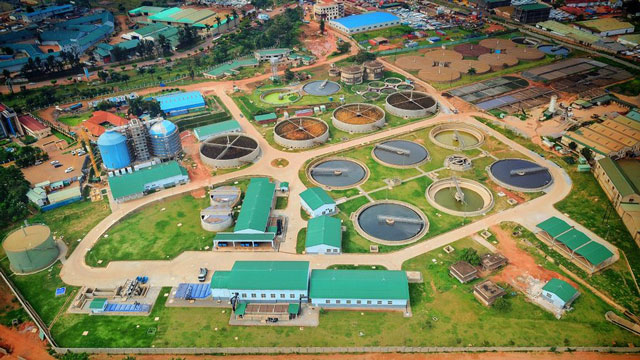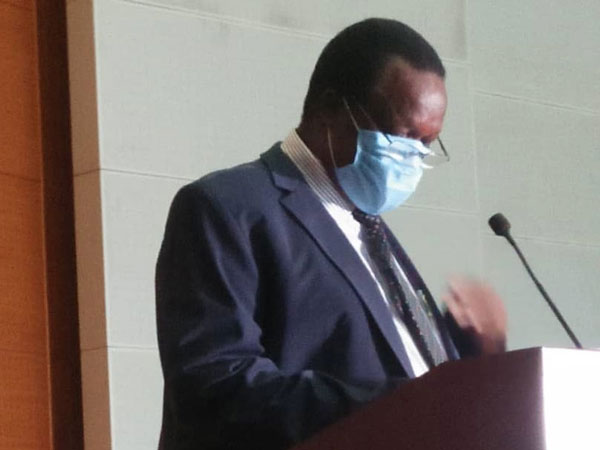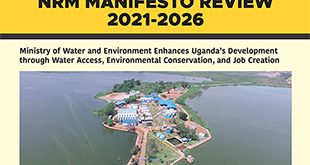
NRM MANIFESTO WEEK | The ministry of Water and Environment is planning to have its own force to protect forests and wetlands just like Uganda Wildlife Authority recruits and manages its game rangers.
Sam Cheptoris, the minister of Water and Environment says this will help protect the dwindling forests better since the environmental police is thin on the ground. National forests are disappearing at higher rate in Uganda and action has to be taken early to arrest the situation.
Meanwhile, tree planting campaigns money has been included in the budget to increase tree coverage in the country, protect the environment and also for commercial purposes.
Cheptoris promised that uniform water tariffs will soon be implemented in the country once the policy is ratified. Currently the tariff policy is being prepared and once in place it will help harmonize water charges will soon come out.
“We take water to be a human right,” said Minister Cheptoris at today’s Manifesto Week briefing, adding that, “It is unfair to charge high prices for even the poor who cannot afford. That’s why in urban centres where the poorest of the poor live water is offered at a subsidized cost of Shs50 per 20Litre jerrycan.”
Minister Cheptoris said this while presenting the ministry’s performance report during the NRM Manifesto Week at the Office of the Prime Minister in Kampala on May 10. He listed other achievements as increasing access to water in the country whereby clean and affordable water access in rural areas is at 68% while in urban areas it is at 75%.

Overall a total of 38,517 villages representing 66% out of the total 57,974 villages in the country have been served with clean water. So far 35 districts have their water coverage above 80%. My sector has managed to construct 132,341 domestic water points countrywide of which 41,112 (deep boreholes), 21,590 (shallow wells), 29,097 (protected spring), 20,306 (PSP/taps) and 20,236 (rain water harvesting tanks) serving 27, 797,316 people. An additional delivery of water to 23,910 wards within towns and municipal councils were served by NWSC under the SCAP-100 and MWE projects.
The manifesto pledged an annual target of drilling 5,000 boreholes in 5 years at a rate of 1,000 boreholes per year and fitted with handpumps based on their yield. To date, the sector managed to drill 846 boreholes per year translating into 84.6% performance. These boreholes have helped serve an extra 253,800 people across the country.
During the five years, at least 7 new towns in Kasagama, Kinuuka, Namagera, Nyahuka, Iziru, Busede-Bugobya and Kaperabyong, Kayunga including Kamuli FSM were completed. While 4 new towns of Mpara Nakasongola, Nakapiripirit and Kyamuhunga are under design phase.
The national average sanitation coverage in rural areas has increased from 77 % to 79%. While sanitation in urban areas has increased to 87.4%, with 5 faecal sludge management plants en constructed in Pallisa, Apac Kiboga Nakasongola, and Kamuli while 101 public water borne toilets have been constructed across the country and 4 cesspool emptiers procured.
The NWSC increased Sewerage connections to 23,796. The total sewer network is 670kms countrywide representing 30%. Improvements are attributed to completion of Nakivubo-Kinawataka sewer lines, Nakivubo Waste water treatment plant, Arua and Gulu projects, and Fortportal and Kisoro package sewage plants.
Efforts have been made to increase storage and invest in construction of multipurpose water reservoirs to boost production and productivity in the key sectors of the economy, as well as managing and protecting water and environmental resources through restoration of water catchments and associated ecosystems country-wide.
In a bid to protect and conserve the environment, Cheptoris reported that although target was to increase wetlands coverage from 10% to 12% by 2021, the converge has stagnated to less than 8.9%. “As the sector restores an improve on coverage, degradation on the hand has not stopped due to increasing pressure for human settlements, agriculture use and industrial development in wetlands.”
To conserve wetlands, cancellation of land titles in wetlands will continue.
Challenges faced include land conflicts and high compensation requests resulting in delays in execution and encroachment on public forests. In spite of the challenges, Cheptoris promised that the Ministry of Water and Environment will continue to protect and conserve the environment for posterity and continue ensuring equity in distribution of water country wide.
 The Independent Uganda: You get the Truth we Pay the Price
The Independent Uganda: You get the Truth we Pay the Price



